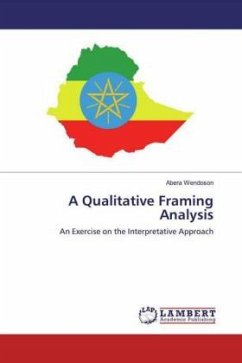When the Oromo people, the largest ethnic group in Ethiopia, started peaceful anti-government protest in November 2015, no one had expected that in only two years time they would possibly get rid of the Marxist totalitarian leadership in EPDRF replacing it by its own reformist politicians. What partly developed the pessimism towards political change after the Oromo struggle at the time was that beyond the governments' daily gun shot at protesters, the local media was highly engaged in demonization, and marginalization of protesters. The government had totally brought the media under its grips not to voice the dissent, while it also manipulated the media by means of directly dictating journalists to do only the job of government's public relations. In this book therefore, the author presents how the state media manipulated media coverage by using different causal frame of analyses to de-emphasize and discredit the basic question of the Oromo rioters and how those ideological frames failed to influence the wider public's perception partly because of the contrasting international media frame and the social media counter discourse promoted by diaspora activists and local bloggers.
Bitte wählen Sie Ihr Anliegen aus.
Rechnungen
Retourenschein anfordern
Bestellstatus
Storno








